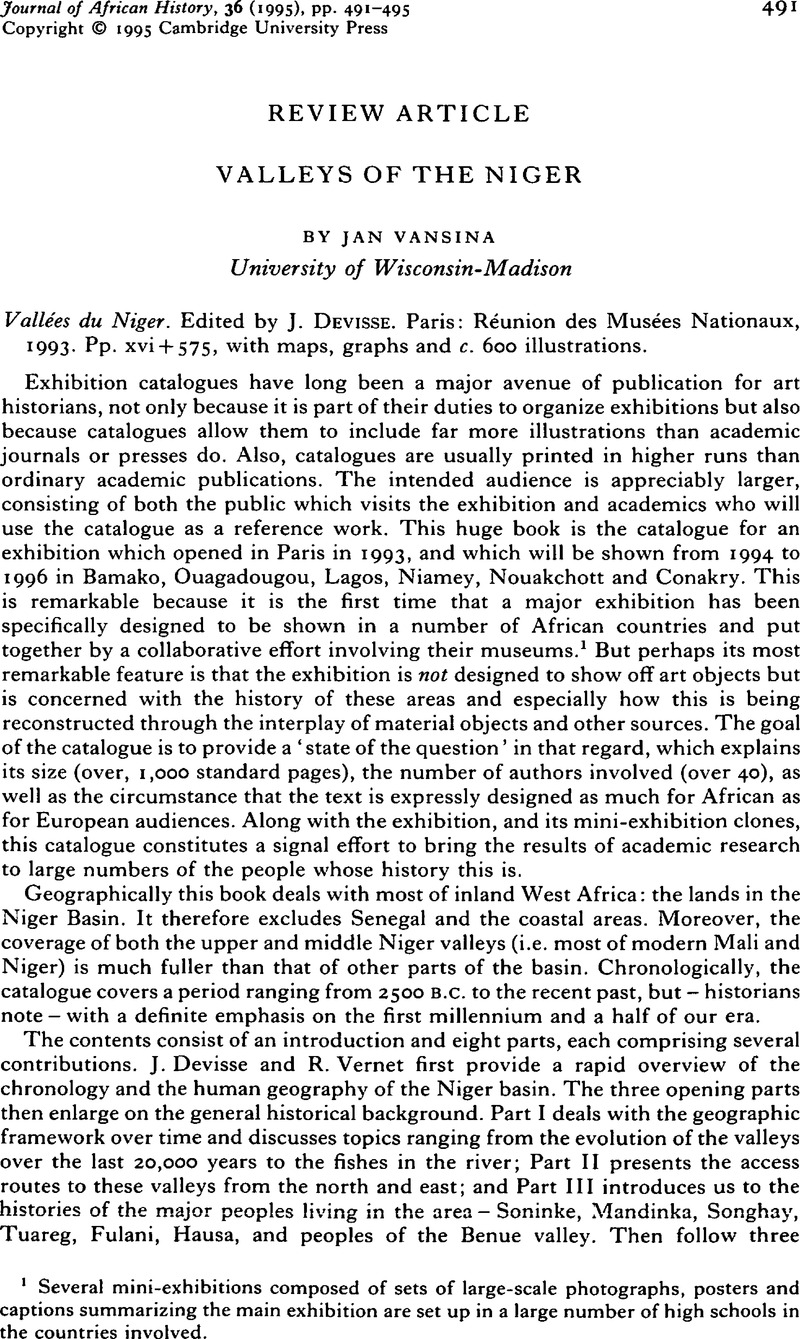Article contents
Valleys of the Niger
Published online by Cambridge University Press: 22 January 2009
Abstract

- Type
- Review Article
- Information
- Copyright
- Copyright © Cambridge University Press 1995
References
1 Several mini-exhibitions composed of sets of large-scale photographs, posters and captions summarizing the main exhibition are set up in a large number of high schools in the countries involved.
2 For the standard organization, see Shaw, T., Sinclair, P., Andah, B. and Okpoko, A. (eds.), The Archaeology of Africa: Food, Metals and Towns (London, 1993)Google Scholar, or Phillipson, D., African Archaeology (Cambridge, 1993, and ed.).Google Scholar
3 Devisse, J., ‘La recherche archéologique et sa contribution à l'histoire de l'Afrique’, Recherche, Pédagogie et Culture, LV (1981), 3–8.Google Scholar His rejection of models places him at the antipodes of the position of most anglophone authors, especially perhaps McIntosh, S. Keech. Cf. her ‘Changing perceptions of West Africa's past: archaeological research since 1988’, Journal of Archaeological Research, II (1994), 165–98, esp. p. 179CrossRefGoogle Scholar, where one has ‘cooperation model’, ‘central place theory’, and ‘peer polity interaction’ model, all in a single paragraph.
4 McIntosh ‘Changing perceptions’, 173 glosses ‘must be regarded with considerable scepticism’, although it is not much clearer why this should be necessary.
5 Ibid., 176 concurs.
- 1
- Cited by


